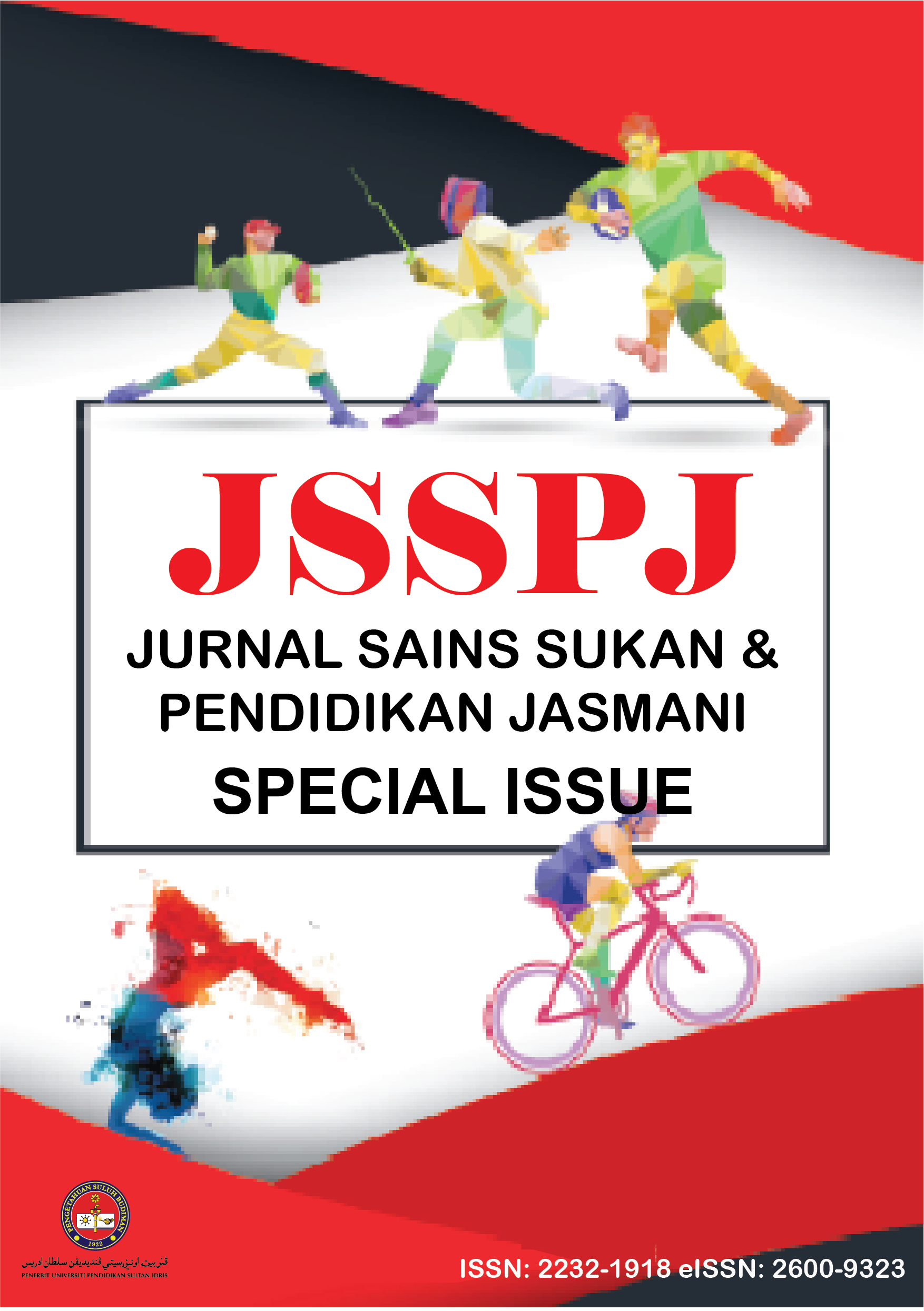The impact of myofascial release on middle school students' sit-and-reach performance: A randomized controlled trial
DOI:
https://doi.org/10.37134/jsspj.vol13.sp.15.2024Keywords:
Myofascial release, Flexibility, Middle school students, Sit-and-reachAbstract
This study explores the relationship between Sit-and-Reach performance among Chinese adolescents and myofascial release, making a significant contribution to the field of sports science. Given the central role of student physical health in school physical education and Sit-and-Reach as a crucial indicator of adolescent flexibility, the results of this study hold broad practical and theoretical implications. 62 students from Xianlin Middle School in Hangzhou participated in a controlled group experiment, meticulously designed to record data across 8 experimental conditions. Utilizing SPSS software, we conducted ANOVA statistical analyses and post-hoc comparisons among IG1, IG2, IG3, IG4, IG5, IG6, CG1, and CG2 to ensure the reliability of our conclusions. Significant differences in student performance were observed under IG1, IG2, and IG3 conditions due to different measurement methods. Notably, the inter-group difference was most significant in Technique 1 (p < .001), followed by Technique 3 (p = .028), with Technique 2 showing the highest level of significance (p = .055). This provides scientific basis for selecting methods in physical assessments, aiding more accurate evaluations of student flexibility. The difference in performance between warm-up and non-warm-up groups was significant (p = .019), highlighting the positive impact of warm-up on Sit-and-Reach performance. This finding emphasizes the crucial role of warm-up in enhancing Sit-and-Reach scores, underscoring the importance of warm-up routines. IG4, IG5, and IG6 compared to CG2 all showed highly significant differences (p < .01), indicating that different warm-up techniques significantly influence Sit-and-Reach performance. This discovery not only provides new strategies for physical education and training but also supports personalized teaching approaches. The findings of this study are highly innovative and applicable in the field of sports science. By integrating myofascial release techniques, we can effectively enhance Sit-and-Reach performance among students, thereby improving their flexibility. This achievement not only enhances the physical health of secondary school students but also enhances their performance in sports competitions. Therefore, we recommend that physical education professionals and coaches actively incorporate myofascial release techniques into their teaching and training practices to promote comprehensive development of students' physical fitness.
Downloads
References
Chen, P. (2020). An experimental study of physical and motor function training on improving the performance of junior high school students in sitting forward flexion. Youth Sports(12), 44-45.
Chen, T. (2018). Effects of fascia release on flexibility and quality of college entrance examination for Gymnastics Majors. (Master), Liaocheng University.
China, M. o. E. o. t. P. s. R. o. (2022). Compulsory education physical education and health curriculum standards: Beijing Normal University Press.
Davis, D. S., Ashby, P. E., McCale, K. L., McQuain, J. A., & Wine, J. M. (2005). The effectiveness of 3stretching techniques on hamstring flexibility using consistent stretching parameters. The Journal of Strength & Conditioning Research, 19(1), 27-32.
Gao, S., & Li, M. (2021). An empirical study of chinese students' flexibility quality testing method. Journal of Shanxi Datong University: Natural Science Edition.
Guo, X. (2020). Correlative study on the effect of myofascial release on the forward flexion achievement of 14-16 year-old adolescents in sitting position. (Master), Qinghai Normal University,
Hou, G., Shi, W., Zhang, P., & Luo, J. (2019). Experimental research on "massage + PNF" stretching in flexibility training, Nanjing, Jiangsu, China.
Huang, H., Yu, C., & Zhao, H. (2016). Study on the effectiveness of foam rolling on improving the flexibility of hamstring muscles in adult men. Sports Science, 36(05), 46-53.
Li, X., & Chen, X. (2009). Effect of extension practice on sit-and-reach in P.E. teaching. Journal of Sports Adult Education, 26.
Lv, Y. (2010). Investigation on the current situation of flexibility training methods in rhythmic gymnastics in my country. Journal of Chengdu Institute of Physical Education, 36(09), 62-64.
Ma, Y. (2021). Research on the application of PNF method to improve the flexibility quality of lower limbs of students in professional aerobics courses. (Master), Guangzhou Institute of Physical Education.
Myers, Guan, L., Zhou, W., & Weng, C. (2015). Anatomy train: myofascial meridian in manual and movement therapy. Anatomy Train: Myofascial Meridian in Manual and Movement erapy, 15(4), 269.
O'Sullivan, K., Murray, E., & Sainsbury, D. (2009). The effect of warm-up, static stretching and dynamic stretching on hamstring flexibility in previously injured subjects. BMC musculoskeletal disorders, 10, 1-9.
Qiu, B. (2017). The effect of myofascial grooming on the running economy of male college students with different endurance levels. (Master), Beijing Sport University.
Wang, L. (2022). Contrastive analysis of the immediate effects of PNF stretching and static stretching on the performance of sitting forward flexion in PE middle school entrance examination students. (Master), Sichuan Normal University.
Yılmaz, D. S. (2021). The effect of different flexibility studies on performance of taekwondo. Turkish Journal of Sport Exercise, 23(3), 339-344.
Yu, X. (2020). Using stretching exercises to effectively improve the performance of students in sitting forward bending. Chinese School Physical Education, 39(10), 41.
Downloads
Published
How to Cite
Issue
Section
License
Copyright (c) 2024 Wenyao Chen, Mohamad Nizam Mohamed Shapie, Mohamad Rahizam Abdul Rahim

This work is licensed under a Creative Commons Attribution-NonCommercial-ShareAlike 4.0 International License.





